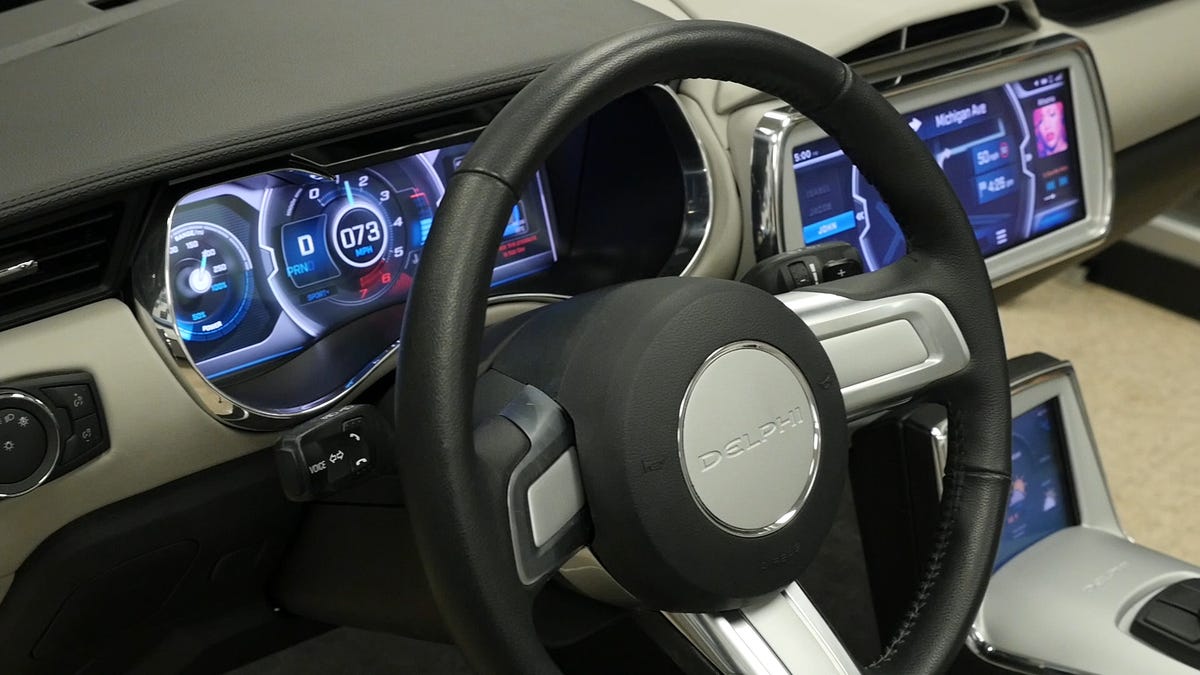Delphi shows-off sharper visuals for in-car displays at CES
Multilayer screens add depth and high-definition imagery to car interiors.

Delphi jazzes up in-car screen graphics.
You would be hard pressed to find a new car today that doesn't have at least one screen of some sort in its interior, for instance, a central touchscreen or one integrated into the main cluster. In many cases, the gauge cluster itself is simply a giant display. With the industry's movement towards piling in more screens into car interiors, Delphi is taking steps to amp up the visuals with a new multilayer graphics display, which it has revealed at CES 2017 in Las Vegas.
The new display system is the result of Delphi's acquisition of Pure Depth, a company out of New Zealand best known for producing casino gaming screens. With typical gaming machine screens a bit too big to fit into a car, Pure Depth had to resize its technology to a more dashboard-friendly size. In the case of the Ford Mustang GT concept cabin, which Delphi is showing at CES, it's a 12.3-inch unit.
Graphics on the multilayer display are impressive with crisp and vibrant visuals that look better than any other car screen currently on the market. The depth provided by the two-pieces of glass used for the display also adds another layer of visual appeal that hasn't been seen yet in a car interior.
The Delphi system will get sharper, too. Currently, screen resolution is at 1,440x540 pixels, but will improve to 1,920x780 pixels in future generations. That's good news, because the onslaught of screens popping up in cars is sure to continue.
Be sure to stick around Roadshow (and the rest of CNET) for our complete CES 2017 coverage.

